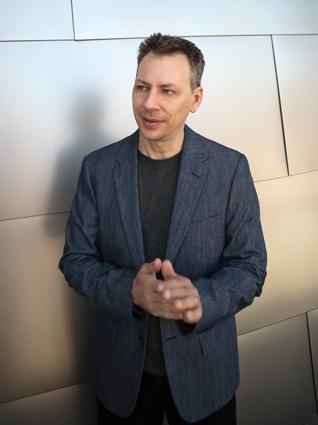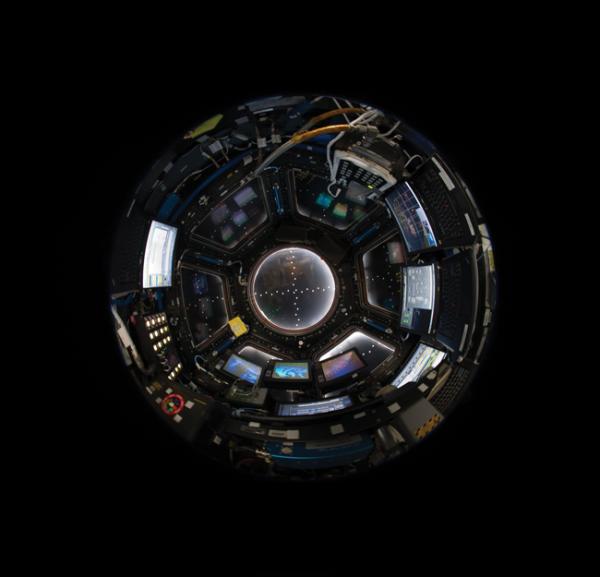Atmospheric Disturbance
What happens in space, doesn’t always stay in space
- Feature

Valentin Lebedev sensed that something was wrong.
“Today passed as usual, but I can feel that I am beginning to get tired and nervous, even though my overall physical condition is good,” he wrote. “Tomorrow will be even harder because of its workload.”
September 7, 1982, was the cosmonaut’s 118th day aboard the Salyut-7space station. When completed, his mission would be remarkable for its length—211 days, a record that stood for 13 years—and for the diary that recorded in intimate and unsparing detail his life on the station. The diary recounts not only thousands of research and operational tasks but also Lebedev’s frustration with ground control, the grudging silences with his lone crewmate, and his mounting anxiety and depression in the loneliness of space.
Since the dawn of the space age, its architects have recognized the mission-critical importance of human factors—not only nutrition and ergonomics but also management theory and group dynamics. As missions grew in length and complexity, planners devoted more attention to assessing and maintaining the mental health of space explorers, especially as planning for missions to Mars and beyond anticipated ever greater isolation: When an astronaut on Mars asks mission control a question, the reply will follow at least eight minutes of silence.
Screen Time
For help with the human factors, NASA has turned to behavioral researchers. Among those is psychologist James Cartreine, an HMS instructor in psychiatry in the Program in Behavioral Informatics and eHealth at Brigham and Women’s Hospital. He has been exploring how software could be used to deliver behavioral therapy, which applies evidence-based, pragmatic techniques to problems like depression or anxiety. The conversation between behavioral therapist and patient may resemble other psychotherapeutic techniques, but it often follows a series of questions to identify a problem in a person’s life and discrete actions to address it. And in those scripts, Cartreine and other researchers saw a way to deliver behavioral therapy without the therapist.
“I wondered how you might automate what a psychologist would do one on one with a patient,” says Cartreine, “and it turns out, NASA was interested in how to help astronauts if they developed depression while on a mission.”

In 2001, the National Space Biomedical Research Institute gave Cartreine the green light to develop the behavioral therapy software that came to be known as the Virtual Space Station.
Harmonic Convergence
Like its namesake, the Virtual Space Station is an assemblage of modules. Astronaut training modules employ interactive videos to walk users through potential conflicts and strategies to resolve them. One scenario: Your team has made an error that will delay, but not endanger, an experiment. You want to report the cause of the delay to ground control—but your crewmate does not. You can select from a range of responses, from “They’ll spend hours trying to figure this out. We’ve got to tell them.,” to “What’s wrong with telling ground?,” to “Okay, but you’re putting me in a bad position.,” and the video shows the likely outcomes of your choice, followed by a voice-over discussing the dynamics at play. (Hint: Ultimatums may escalate the situation; questions defuse it.)
Other modules are designed for use during space missions. Self-assessment modules help a user rate personal levels of stress, depression, and interpersonal conflict. Based on a user’s responses, the system provides feedback and recommendations. And self-guided treatments help astronauts deal with problems such as depression and conflict, if they arise.
To address depression, which some astronauts have confronted on past missions, Cartreine and his colleagues developed a problem-solving therapy program. As in one-on-one therapy with a counselor, the program doesn’t tell users how to solve a personal issue, such as those involving relationships, health, finance, or family. Instead, a series of questions and answers helps the user develop a plan to address it. Follow-up sessions help to gauge progress and, if necessary, to develop a plan B. Throughout the modules, short videos provide background, encouragement, and user-tailored advice on ways to improve problem-solving success. “The goal is to simulate as closely as possible a session with a master therapist,” Cartreine says. Although the software has not yet made a trip into space, it has been used in astronaut training.
Anticipating the myriad problems that might crop up during a mission is complicated by the sensitive nature of the data. An astronaut’s behavioral health history is part of his or her confidential medical record, which presents a hurdle to researchers. So Cartreine and others have pieced together a picture of the difficulties encountered from news reports, astronauts’ memoirs, and other documented accounts, like Lebedev’s diary.
Falling Stars
“Today was difficult,” Lebedev wrote about crewmate Anatoly Berezovoy on their 60th day in space. “We don’t understand what is going on with us. We silently walk by each other, feeling offended. We have to find some way to make things better.”
Other cosmonauts may have had it worse: Evidence suggests that one Russian mission was scrubbed due to depression among personnel and another due to interpersonal conflict.
In the United States, Buzz Aldrin has written candidly about the depression and alcoholism that followed his astronaut career. Former U.S. astronaut Charles Brady committed suicide in 2006, 10 years and two weeks after his only space flight. And in 2007, six months after returning from a shuttle mission to the International Space Station, astronaut Lisa Nowak was charged with the assault and attempted kidnapping of a romantic rival, actions she says were triggered by depression.

Deep Impact
In the wake of Nowak’s arrest, NASA administrator Michael Griffin commissioned a review of the space program’s mental health care system. The review committee recommended that NASA give more systematic attention to mental and behavioral health issues. But it cautioned that “the use of any behavioral health selection and patient data is a matter of concern for astronauts, family members, and medical and behavioral health personnel.”
That concern drove the design of the Virtual Space Station, Cartreine says. Data are stored on a personal flash drive that the astronaut carries—not only during the mission, but also during the years of training. Nothing is transmitted to Earth or stored on shared workstations. The goal is to give astronauts the privacy to work through problems that they feel unable to raise with their flight surgeons. “If astronauts believe that what they say is confidential and that they can answer honestly, we think they will have a better chance of benefiting from the system,” Cartreine says.
Another obstacle for researchers has been sample size: There just aren’t enough astronauts to generate a large enough volume of data. But this problem is one the space program has confronted and solved by studying what are called analog populations, groups such as Antarctic researchers, crews of underwater research stations, or, in Cartreine’s case, firefighters.
“Like astronauts, firefighters live together for days at a time,” Cartreine says. “There’s this interdependence for safety but also for social support. It’s an operational environment, meaning you’re working with equipment, as opposed to working in an office. And you can die on the job.” Cartreine is working with fire departments in three U.S. cities to test whether a new Virtual Space Station computer program can help these firefighters resolve workplace conflicts.
Cosmic Community
The Virtual Space Station has taken some ribbing. (Comedian Paula Poundstone: therapy is hard when transmissions between Earth and Mars take up to 40 minutes “and the hour only lasts 50.”) And Cartreine was amused when a New Zealand TV newsmagazine paired him with David Bowie, whose contribution to the field is the song “Space Oddity.” But Cartreine is serious about the potential of computer-based therapy, and has cofounded Cognitive Behavioral Technologies LLC, a company to promote its wide adoption. Cartreine notes that computer-based therapy is being used with wider application overseas, where it has been shown to improve conditions from post-traumatic stress to depression.
The potential benefit is huge: Depression is the leading cause of disability in the United States, and mental health disorders account for four of the ten leading causes of lost productivity. A 2008 study put the annual cost of lost productivity owing to mental health disorders at $198 billion. Behavioral therapy has advanced to the point, Cartreine says, that doctors can be fairly confident that patients who follow protocol will see improvement. And computer-based therapy can deliver treatment that’s cost effective and available whenever and wherever it’s needed.
As technology offers more solutions on Earth and in space, it underscores that the enduring problems are human ones, a conundrum that struck the cosmonaut Lebedev some 30 years ago. “If you were a construction worker or mechanic, plowing the land or building factories, it would be different,” he wrote. “You could turn a blind eye to the imperfections of others. However, in space technology the responsibilities are obviously much more serious, but people are still the same. Social defects cross all borders, and space becomes a mirror of all our terrestrial shortcomings—social, economic, and moral.”
R. Alan Leo is senior writer and editor in the HMS Office of Communications and External Relations.